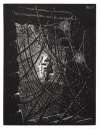Chuck
Close
Chuck Close's groundbreaking approach to portraiture, characterised by his large-scale, photorealist works, redefined the genre in the late 20th century. If you're looking for Chuck Close original prints and editions for sale or would like to sell, request a complimentary valuation and browse our network's most in-demand works.
Chuck Close art for sale
Discover Chuck Close prints for sale, exclusively available through our private network of collectors. Explore signed and unsigned screenprints, lithographs, digital prints, and rare editioned proof prints by era-defining blue chip artists.
Sell Your Art
with Us
with Us
Join Our Network of Collectors. Buy, Sell and Track Demand
Biography
Born in 1940 in Monroe, Washington, Chuck Close faced numerous challenges in his early life, including the death of his father when he was just 11 years old, a neuromuscular condition that affected his mobility, and navigating life with dyslexia. Despite these obstacles, Close's passion for art, ignited by his mother's encouragement, led him to pursue a career as an artist.
Close's artistic journey began in earnest at the University of Washington, where he earned his BA in 1962, followed by an M.F.A. from Yale University in 1964. It was during this period that Close began to develop his signature style, characterised by large-scale, hyper-realistic portraits based on photographs.
Close's breakthrough came in 1967 with his first solo exhibition at the University of Massachusetts Art Gallery, which featured his iconic black-and-white portrait heads. These works, created using a grid system and airbrush techniques, showcased Close's ability to capture his subjects with meticulous and innovative detail.
During his time at Yale, Close began his journey into printmaking where he worked as an assistant to Gabor Peterdi. This early experience laid the foundation for his engagement with the medium. His 1972 mezzotint, Keith, marked the debut of his signature grid system used to translate photographic images. Close's extensive printmaking activities include working with prestigious studios such as Crown Point Press, Graphicstudio, and Vermillion Editions.
In his 1981 lithograph Phil, a portrait of his friend Philip Glass, Close meticulously employed his grid technique to build the dappled image, capturing the complexity and depth of Glass's likeness.
Throughout the 1970s and 1980s, Close continued to refine his technique, experimenting with colour and scale. His portraits, often depicting fellow artists, friends, and family members, became increasingly complex and layered, incorporating elements of abstraction while maintaining their photorealistic quality.
In 1988, Close suffered a severe spinal artery collapse that left him paralysed from the neck down. Testament to his artistic commitment, he adapted his process, using a brush strapped to his wrist to continue creating his monumental works. This resilience and determination became a hallmark of Close's career, as he continued to innovate and push the boundaries of portraiture.
Close's work has been exhibited in a number of prestigious institutions, including the Museum of Modern Art, the Metropolitan Museum of Art, and the Whitney Museum of American Art. His contributions to the art world have been recognised with several awards, including the National Medal of Arts in 2000 and the Skowhegan Medal for Painting in 2004.























